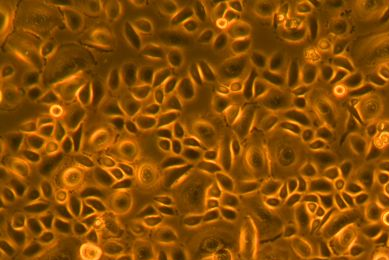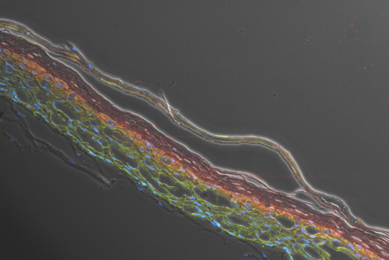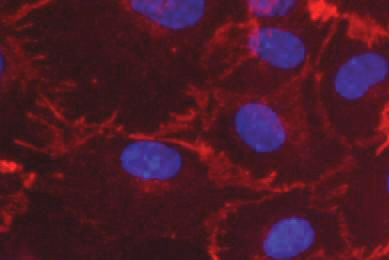Why it's important
An in-depth understanding on the physiological and cellular processes that occur in the bronchial/tracheal epithelial cells of the human lung in normal and disease conditions is essential for drug discovery. Within the airway epithelium, HBECs play several important roles such as absorbing extraneous molecules through the respiratory tract, maintaining epithelial homeostasis, remodeling, and responding to acute and chronic illnesses of the lung. With this in mind, ATCC investigated the properties of primary HBECs as an in vitro model.What ATCC studied
In our study ATCC Human Bronchial-Tracheal Epithelial Cells: Improving Functional Studies, we cultured primary HBECs (ATCC PCS-300-010) to test their ability to differentiate into mature airway tissue when using an air-liquid interface (ALI) culture model.What we found
Cultured ATCC primary HBECs remained confluent and attached to the substrate, indicating their prolonged viability in an environment mimicking that of the respiratory epithelium. The HBECs formed a pseudostratified, ciliated epithelium, and the cilia were observed to beat in a synchronous manner. Some of the cells also exhibited large, periodic acid-Schiff (PAS)/Alcian blue staining vesicles, suggesting that they differentiated into goblet cells. Thus, ATCC primary HBECs provide a physiologically relevant 3-D model for the investigation of the bronchial/tracheal epithelium, disease modeling, toxicity studies, molecule absorption, drug discovery, and increase the success rate of translational research.
Toxicology expert
Brian Shapiro, PhD
Marketing Segment Manager, Oncology, ATCC
Brian A Shapiro, PhD, works to communicate the scientific breakthroughs of ATCC’s product development laboratories to the biomedical research community. Brian is the Executive Producer of ATCC's Podcast, Behind the Biology. Previously, he worked at Virginia Commonwealth University, where he investigated the role of pre-mRNA splicing in the multi-drug resistance of lung cancer. Dr. Shapiro attended the Medical College of Georgia, where his research focused on adrenal physiology as well as diseases of the epidermis.
Dig into the research
 Application note
Application note
ATCC Human Bronchial-Tracheal Epithelial Cells
This study will test the ability of primary human bronchial/tracheal epithelial cells (HBECs) to differentiate into mature airway tissue using an air-liquid interface (ALI) culture model.
More Webinar
Webinar
Elevate Your Toxicity Assays Webinar
This webinar discusses how modified primary cells are effective tools that provide tissue-relevant results and reproducibility for any cell-based assay, including toxicology assays.
More Culture guide
Culture guide
ATCC Primary Cell Culture Guide
Primary cells retain the physiologies of their parent tissues. Access detailed information on the best practices of culturing and maintaining these versatile cells. Get your culture guide.
MoreReferences
- de Jong PM, et al. Ciliogenesis in human bronchial epithelial cells cultured at the air-liquid interface. Am J Respir Cell Mol Biol 10: 271-277, 1994.
- Berube K, et al. Human primary bronchial lung cell constructs: the new respiratory models. Toxicology 278: 311- 318, 2010.
- STEMCELL Technologies. PneumaCult-ALI Culture Medium for Air-Liquid Interface Culture of Human Bronchial Epithelial Cells. Product Information Sheet.